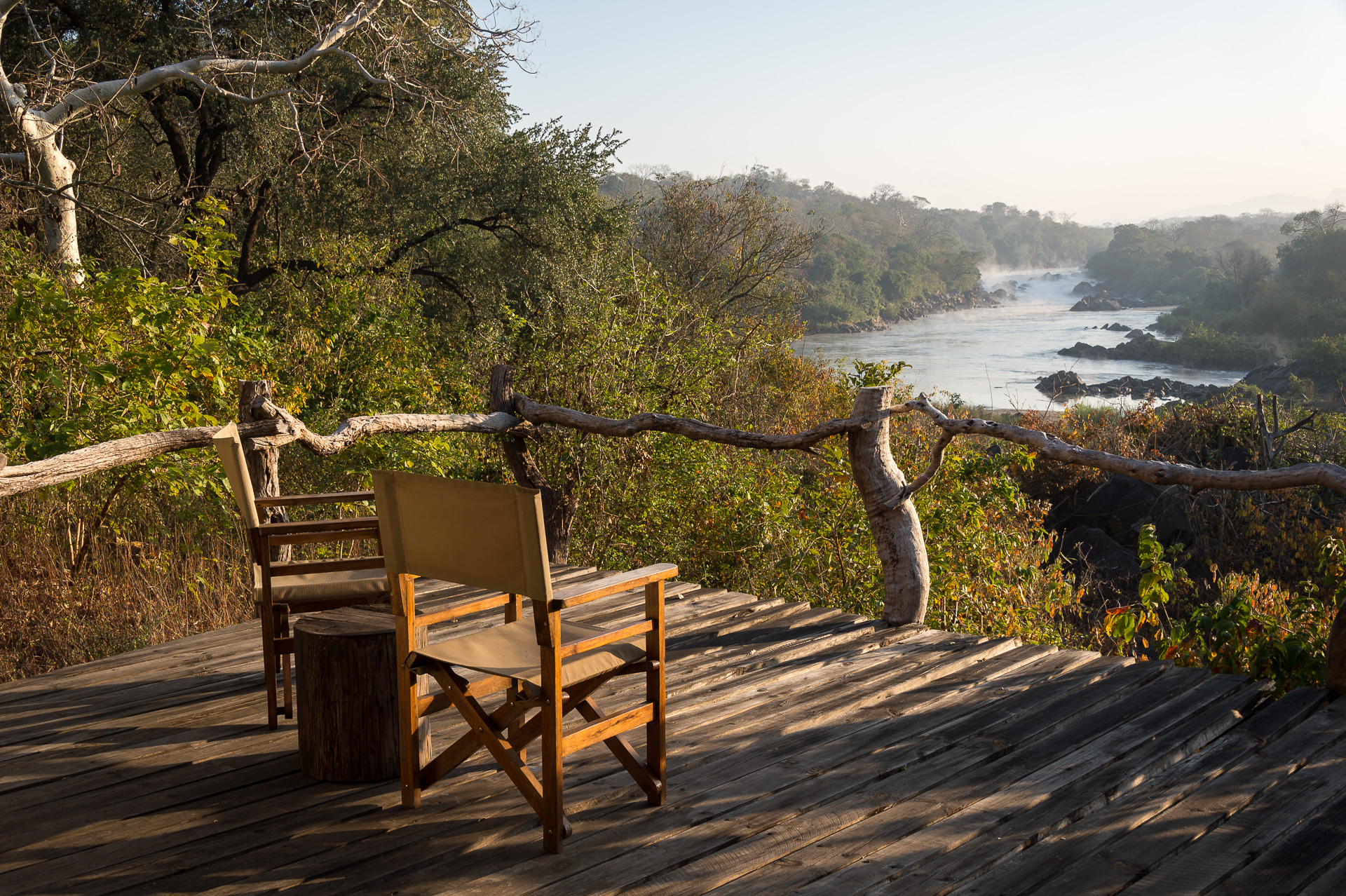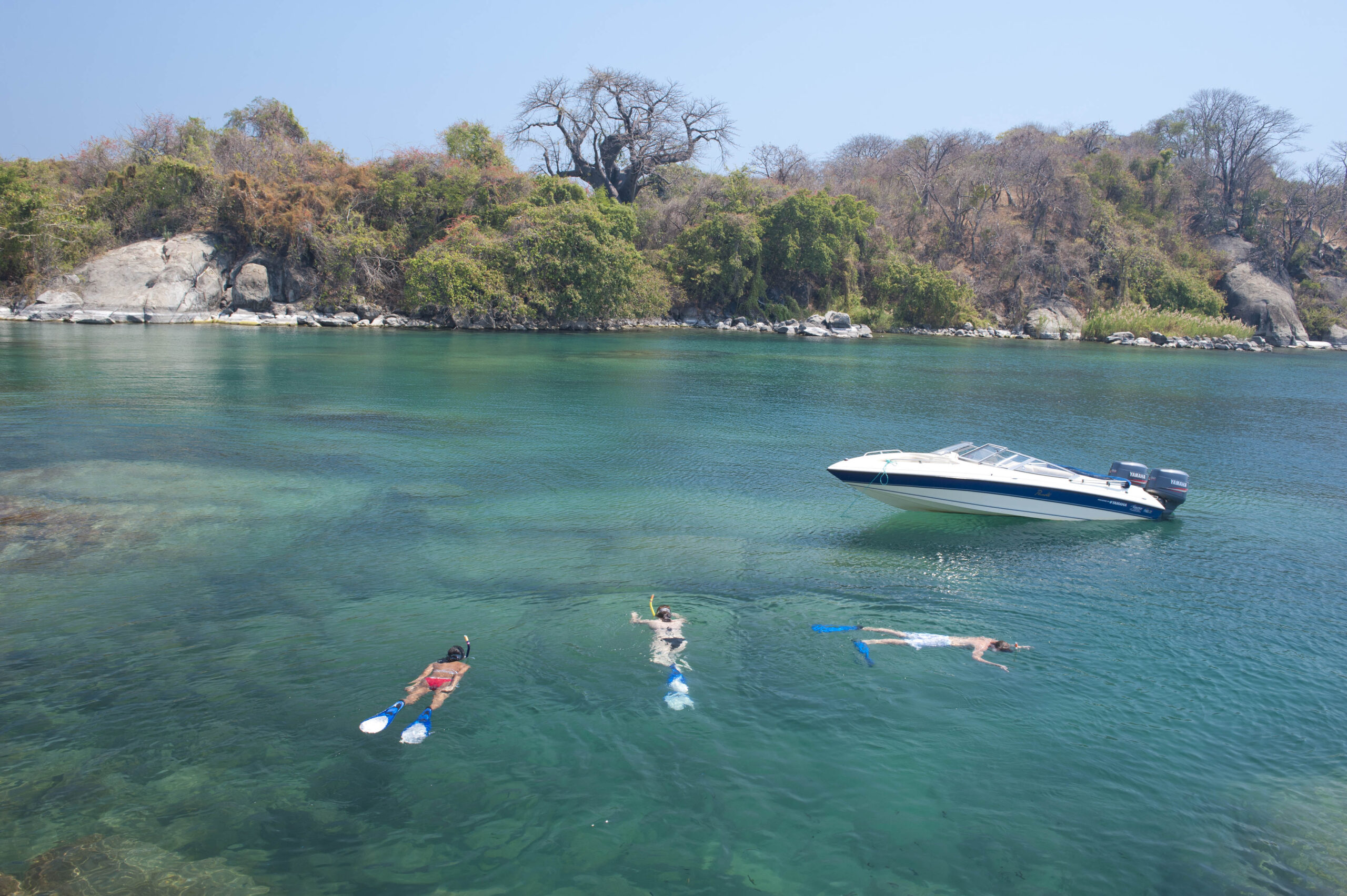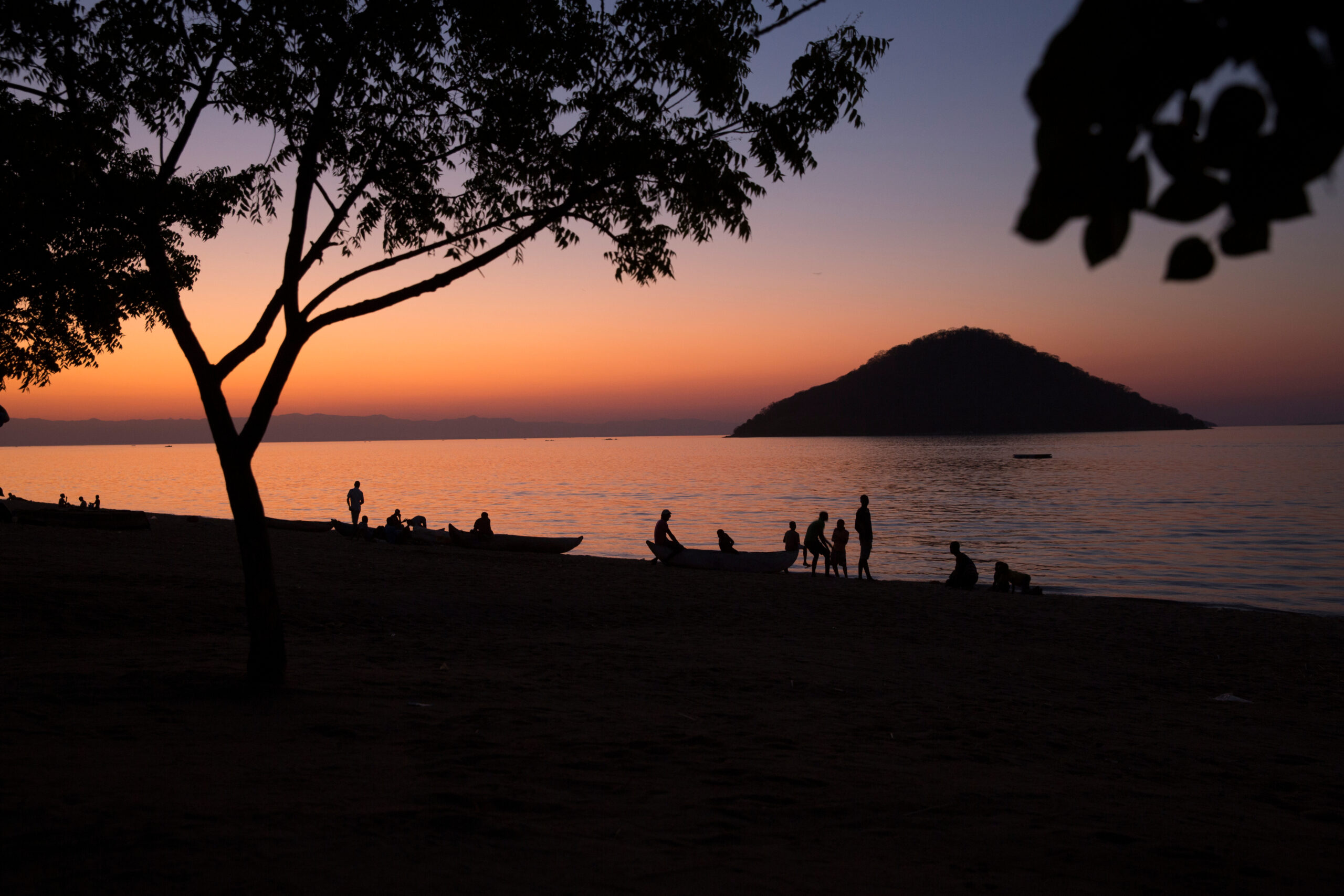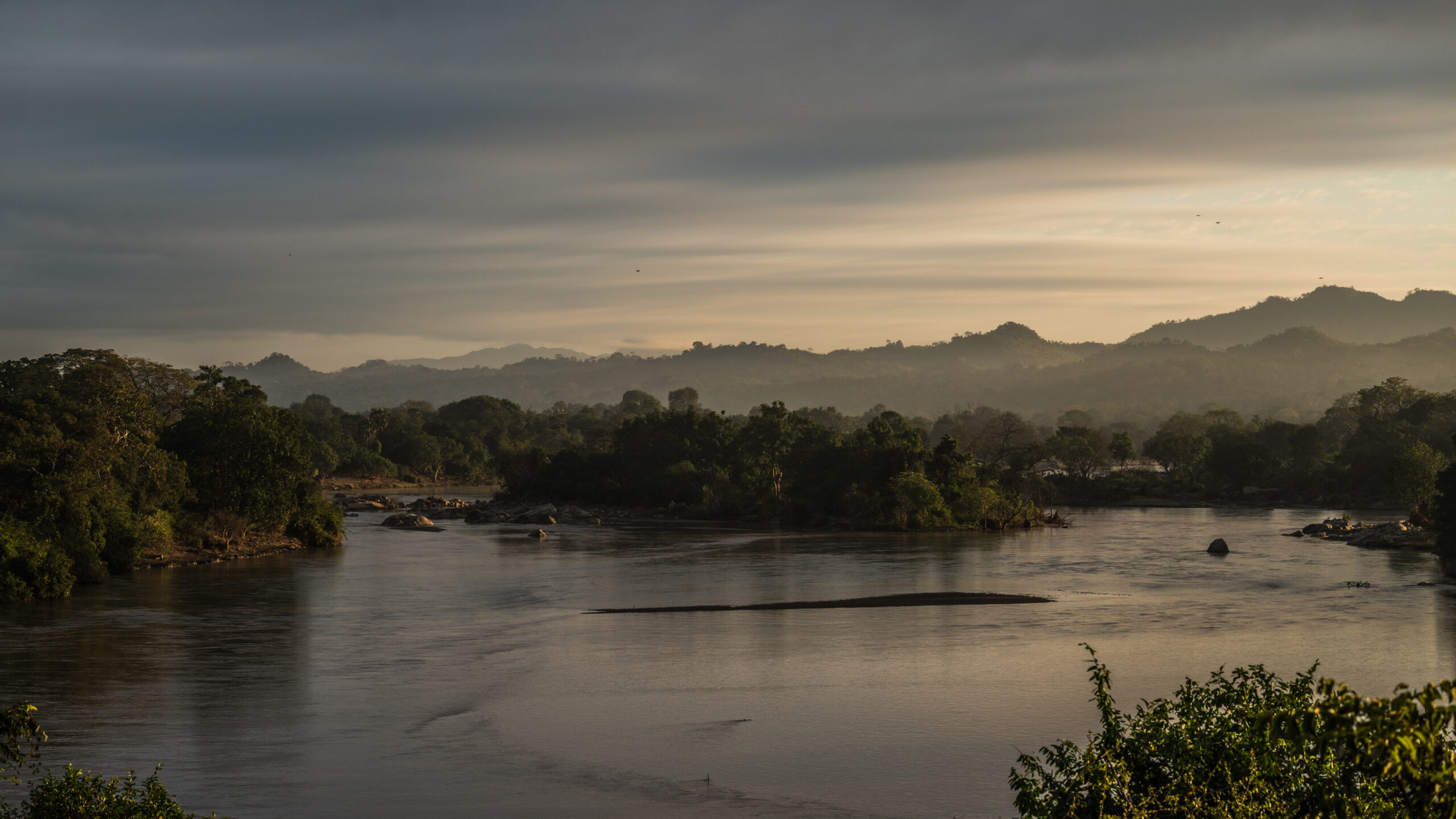Malawi
Malawi, often referred to as the ‘Warm Heart of Africa,’ is a landlocked country renowned for its geographical diversity, featuring dramatic plateaus, high mountains, and the sparkling waters of Lake Malawi, one of Africa’s largest lakes. The lake is a paradise offering sandy shores and opportunities for swimming, sailing, kayaking, and snorkeling and diving among the vibrant cichlid fish. The southwest lakeshore, radiating out from Cape Maclear, offers the most facilities and a good selection of beach resorts, while Likoma Island, straddling the Malawi/Mozambique border, provides a more remote escape.
While Malawi is often considered primarily a beach destination, ideal for combining with a safari in Zambia, its own wildlife regions have been transformed in recent years thanks to an ongoing partnership with African Parks.
Liwonde National Park, with its large population of elephants, flourishing lion prides, and scenic views along the Shire River, offers both 4×4 and boat-based game viewing. A range of species have been reintroduced to Liwonde, with numbers growing steadily. Similarly, Majete Wildlife Reserve has seen the successful reintroduction of 17 species including rhinos, lions, elephants, cheetahs, giraffes, and wild dogs, making it a thriving wildlife destination.
Nkhotakota Wildlife Reserve on the western edge of the lake is Malawi’s oldest and largest reserve, characterized by dense woodlands and wide rivers. The reserve is undergoing a similar transformation, with 520 elephants and 2,000 other animals moved from Liwonde and Majete in 2016/17, followed by further introductions in 2022, including hippos. Bolstering the wildlife is a vital step in developing ecotourism in the area, with wildlife sightings becoming increasingly rewarding in recent years.
Other areas in Malawi worth exploring include Mount Mulanje, a hiker’s heaven with stunning vistas and rugged terrain, and the Zomba and Nyika Plateaus, which offer excellent birding and walking trails.
A treasure waiting to be discovered.
MALAWI JOURNEY INSPIRATION
Our travel network specialises in tailormade holidays. Below you’ll find some examples, with price guide, using destinations and camps/lodges which we think work well together. There are many combinations possible so this is just to give you some initial ideas.
When you are ready to explore options more fully, please do complete an enquiry form – we can then put you in touch directly with the relevant specialist partner team. In discussion with you, they will tailor an itinerary based around your interests and your budget.
 Experience the perfect blend of bush and beach on this 8-day adventure, staying at the luxurious Robin Pope lodges.
Experience the perfect blend of bush and beach on this 8-day adventure, staying at the luxurious Robin Pope lodges.
Your journey begins with three nights in Majete Wildlife Reserve, where you’ll embark on twice-daily game drives, bush walks, and boating safaris. Majete is home to a diverse range of wildlife, including elephants, black rhinos, and zebras. It is the only place in Malawi where you can encounter the Big Five—elephant, lion, buffalo, leopard, and rhino—offering a truly unique safari experience.
Next, you’ll head to the stunning shores of Lake Malawi, famously named ‘The Lake of Stars’ by David Livingstone. The lake’s deep blue waters sparkle in the sunlight, and as night falls, the stars above and the lights from fishermen’s hurricane lamps create a magical scene. Lake Malawi is a paradise for swimming, scuba diving, and relaxing on sandy beaches, providing a perfect contrast to your wildlife adventure.

Days 1-3 Mkulumadzi Camp, Majete Wildlife Reserve
Upon arrival at Blantyre Chileka International Airport, you will be warmly greeted by your experienced English-speaking driver/guide. You will then be transferred to Majete Wildlife Reserve, located in the lower Shire Valley in southwest Malawi. This reserve offers a year-round wildlife experience, with each season presenting its own unique charm.
Majete is home to over 4,000 reintroduced animals, including elephants, black rhinos, buffalo, zebras, sable antelope, eland, waterbuck, nyala, hartebeest, kudu, and more. The reserve’s landscape, characterized by sculpted miombo woodland and stunning river valleys, provides a breathtaking backdrop for your adventure.
Depending on your arrival time, you will either enjoy lunch with a view of the Shire River or indulge in afternoon tea. Your first late afternoon/evening game drive follows, offering an exciting introduction to the reserve’s wildlife.
Over the next couple of days, you’ll immerse yourself in game viewing and a variety of activities, such as boating safaris, bush walks, hiking Majete Hill, black rhino tracking, cultural tours, and birding trips along the Shire River and nearby Elephant Marsh. Each day promises new discoveries and unforgettable experiences in the heart of Majete Wildlife Reserve.
 Days 4-7 Pumulani, Lake Malawi
Days 4-7 Pumulani, Lake Malawi
After breakfast, embark on a scenic drive to the Nankumba Peninsula, one of the most stunning shores of Lake Malawi and adjacent to Lake Malawi National Park. Lake Malawi, the third largest lake in Africa, covers 20% of Malawi’s surface and is a UNESCO World Heritage site. The lake is renowned for its incredible biodiversity, boasting more freshwater fish species than all of Europe and North America combined, and is celebrated for its world-class freshwater scuba diving.
Upon arrival at Pumulani, guests will find a wide range of activities to choose from. Whether you prefer snorkelling, kayaking, or simply relaxing on the pristine beach, Pumulani has something for everyone. For those seeking adventure, the options include waterskiing, sailing, diving, fishing, wakeboarding, and bird watching.
A highlight of any stay at Pumulani is the sunset cruise on a traditional wooden dhow, hand-built by local craftsmen. Each day provides opportunities for relaxation, adventure, and cultural enrichment, depending on your interests, making it the perfect conclusion to your Malawian adventure.
Day 8 End of Arrangements
After an early morning breakfast check out. You will then be transferred approximately 3 hours to Lilongwe Kamuzu International Airport where you will arrive in time to check-in for your onward flight.
PRICE GUIDE
Per person sharing: from £2,775 (based on mid season)
- This itinerary is available year-round except January-March. The optimum times are likely to be July – September.
- This trip starts in Blantyre and ends in Lilongwe
INCLUDES
- All domestic flights, transfers and departure taxes
- Park & conservancy fees
- All game activities
- Full board accommodation and house drinks
- Safari laundry
- Non-motorized sports at Pumulani
International Flights Our partners can book international flights for you as required.
MALAWI GUIDE
You’ll find a short guide to Malawi below.
To start planning a trip to Malawi please contact us via the Enquiry Form, by email on info@realworldconservation.org.uk or on 01692 218189.

Lake Malawi, a Great Rift Valley Lake and UNESCO World Heritage site, is the ninth largest and one of the deepest lakes in the world, reaching depths of 700 meters. Often called the ‘Lake of Stars,’ it is renowned for its sparkling waters and stunning scenery.
Lake Malawi National Park
Situated at the southern tip of the lake, Lake Malawi National Park encompasses Cape Maclear and the Nankumba Peninsula. This area is celebrated for its natural beauty, featuring clear freshwater, sandy beaches, rugged granite islands, and a striking mountain backdrop. It’s an ideal setting for a memorable holiday. The lakeshore lodges are accessible by a four-hour drive from Lilongwe or by flying followed by a short transfer. Combining a stay here with a safari in nearby Liwonde or Majete reserves creates a diverse and exciting itinerary, with a circular route allowing visitors to experience all three destinations.
Likoma Island
In the northeastern part of the lake lies the remote and picturesque Likoma Island, surrounded by Mozambican waters. The island is best accessed by a one-hour flight from Lilongwe. Likoma Island offers bustling fishing communities, secluded coves, and the impressive St Peter’s Cathedral, adding cultural and historical interest to its natural charm.
Biodiversity
Lake Malawi is globally significant for its biodiversity, particularly its endemic species of cichlid fish, known locally as ‘mbuna.’ The lake’s waters are teeming with hundreds of these colourful fish species, making it a critical area for freshwater biodiversity conservation. Besides its rich aquatic life, the lake and its surroundings support a variety of flora and fauna. Mammals such as bushbuck, klipspringer, monkeys, and baboons are common, and some areas of the park are home to hippos and crocodiles.
Local Communities
Scattered along the lake’s shores are numerous fishing villages and local communities. These settlements offer a glimpse into the traditional lifestyles of the people who depend on the lake for their livelihood. Engaging with these communities can provide visitors with a deeper understanding of the cultural and social fabric of the region.

Nkhotakota Wildlife Reserve spans over 1,800 square kilometres of rugged terrain criss-crossed by numerous rivers, with the Bua River being the largest. This river supports a healthy population of salmon, contributing to the reserve’s diverse ecosystem.
The landscape transitions from dense rainforest to miombo woodland, rich in flora and fauna. One of the best ways to experience the reserve’s natural beauty is by kayaking down the river or embarking on a guided walking tour.
The reserve is a haven for bird enthusiasts, offering fantastic birdwatching opportunities. You might also spot elephants coming to drink at the river—500 elephants were translocated to Nkhotakota in 2016/17 as part of a comprehensive restoration plan, along with 2,000 other animals. An additional 800 animals followed in 2022. This influx included hippos, elands, kudus, zebras, impalas, warthogs, sable antelopes, buffaloes, and waterbucks, significantly boosting the biodiversity of the reserve. While leopards and lions are present, they are more elusive due to the dense undergrowth.
Traditionally, exploring this rugged wilderness was challenging, except by river and on foot. However, since African Parks assumed management in 2015, significant improvements have been made. The reserve has been fenced, and a sanctuary has been established, with ongoing plans to further develop, enhance, and protect the park and its wildlife.
The Tongole Wilderness Lodge, the first safari lodge in the reserve, opened in 2011 after two years of construction. Committed to sustainability, Tongole supports the local community through the Tongole Foundation. The lodge’s open-fronted suites with panoramic views and raised decks allow guests to fully immerse themselves in the majesty of the reserve.
Following Tongole’s lead, additional properties have been established, including Bua River Lodge, Kachenga Bush Camp, and Rafiki Safari Camp, which opened in 2019. These developments have made Nkhotakota more accessible and inviting for visitors.
Image: Tongole Wilderness Lodge
Liwonde National Park, located approximately 190km north of Blantyre and covering 548 square kilometres is one of Malawi’s most popular and ecologically significant parks. Known for its scenic beauty and rich biodiversity, the park features ancient baobabs, Borassus palms, and the life-giving Shire River, which attracts a plethora of wildlife, including large herds of elephants, hippos, and crocodiles.
Wildlife and Conservation
Liwonde has seen remarkable wildlife recovery and conservation efforts under the management of African Parks since 2015. By 2017, the park had reintroduced cheetahs, making them the first wild cheetahs in Malawi in over 20 years. Lions were reintroduced in 2018, followed by African wild dogs in 2021. Unfortunately, all 14 wild dogs were lost to poisoning in 2022, highlighting the ongoing challenges in conservation.
Elephant populations have been particularly successful, with over 500 elephants currently thriving in the park. Some elephants have been translocated to Nkhotakota and Nyika to manage population densities. Black rhinos, reintroduced in 1993 and supplemented with additional relocations from South Africa in 2019, are also part of Liwonde’s diverse fauna although they are fairly elusive, hiding in the thick undergrowth and very shy, disappearing quickly should you be lucky to see one.
Birdwatchers will find Liwonde exceptional, with over 460 bird species, including rare and endangered species like the lappet-faced vulture, Pel’s fishing owl, and Lilian’s lovebird. The park’s varied habitats support a rich avian diversity, making it a year-round birding destination.
Liwonde offers several good camps including Mvuu Lodge and Camp, located on the Shire River’s bank, and Kuthengo Camp, opened in 2018, part of Robin Pope Safaris portfolio – this small, seasonal tented camp accommodates up to 10 guests and is situated on a scenic bend of the Shire River.

Dry Season (April to October)
The best time to visit Malawi is during the dry season. This period offers:
- Optimum Game Viewing: Animals congregate around waterholes, making them easier to spot.
- Ideal Lake Activities: Perfect for sailing, snorkelling, kayaking, fishing, and bird watching.
- Better Travel Conditions: Roads are more accessible, and travel between destinations is smoother.
Wet Season (November to March)
The wet season sees many camps and lodges close due to accessibility – road conditions can be challenging due to heavy rains.
Images: Pumulani RPS (top centre); Kaya Mawa (bottom centre); On Safari in Majete with Mkulumadzi Lodge/RPS (bottom right).


 Majete Wildlife Reserve is a remarkable example of environmental recovery and restoration. By the 1990s, most large species, including elephants, had been completely eradicated from the area, leaving behind an empty forest patrolled by just 12 scouts.
Majete Wildlife Reserve is a remarkable example of environmental recovery and restoration. By the 1990s, most large species, including elephants, had been completely eradicated from the area, leaving behind an empty forest patrolled by just 12 scouts.